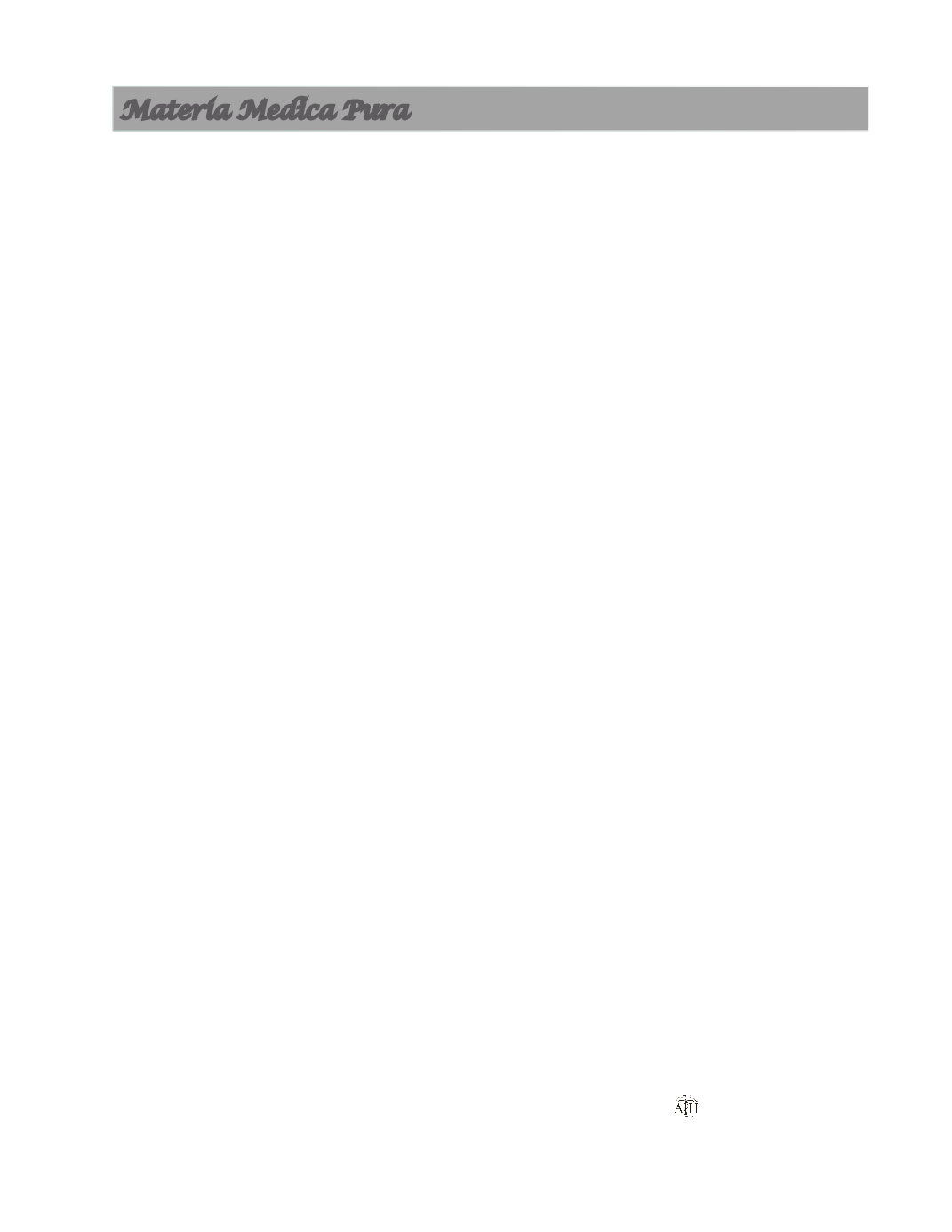
AJHM Summer 2015 63
Volume 108 Number 2
Tim Fior, MD
Introduction to the Materia Medica Pura Project
Materia Medica Pura
O
ur main materia medicas, Allen’s
Encyclopedia of
Pure Materia Medica
and Hering’s
Guiding Symptoms
of Our Materia Medica
, are more than one hundred and
twenty five years old. The purpose of the Materia Medica
Pura Project (MMPP) is to update our materia medicas and
repertories for the top six hundred or so remedies.
1
There
is an international team of homeopaths from Europe, the
US, Canada, and South America working on this project.
Those who join the project are first asked to index the
most important homeopathic journals, many of which are
found online or in digital format. This helps one to appre-
ciate the vastness and richness of the existing homeopathic
literature, particularly journals from the golden years of
homeopathy: the mid-19
th
to the early 20
th
centuries. The
purpose of this indexing is partly to find interesting articles,
but the most important aim is to sort out provings, toxico-
logical reports, cured cases and clinical experiences from
reliable sources.
Once a journal is indexed, the results are incorporated
into a general index that is constantly expanding. This gen-
eral index, along with a number of other indices of the old
and modern homeopathic literature, forms one of the main
data banks of the MMPP. Search engines such as Google
Books are utilized and programs such as
ReferenceWorks
and
Encyclopaedia Homeopathica
are also searched to
gather further information.
The first step in creating a remedy monograph is to as-
semble and read all the accumulated information on the
remedy (provings, toxicological reports, cured cases and
clinical experience) in chronological order, beginning with
its original proving onward. The characteristic symptoms
are then pasted in a document according to Hahnemann’s
schema—from above, down and inside, out. The work
of Hahnemann is consulted first when the remedy is one
he proved, followed by reference to subsequent publica-
tions such as Allen’s
Encyclopedia
2
and Hering’s
Guiding
Symptoms.
3
All cured cases and a reference list are placed
at the end of the monograph and voilà, the greatest part of
the work is done.
However, the monograph is far from being completed,
as the most important part of the work now needs to be
done. To facilitate its access to the busy practitioner, an
introduction is written, detailing the substance used to
make this remedy, its history and any interesting anecdotes
related to it. The monograph is then re-read line by line
and every symptom is dissected in order to make repertory
additions. This process consists of adding and upgrading
the remedy to existing rubrics and/or adding new rubrics or
subrubrics, where necessary.
Through this final process, the monograph author de-
velops a deep understanding of the remedy—perceiving
its trends, patterns and red threads. This knowledge is the
basis for outlining the genius of the remedy. This “genius”
becomes the most important part of the monograph—en-
abling the busy practitioner to seize in a few moments the
most essential aspects of a remedy.
So far, our work has resulted in tens of thousands of
reliable additions to the repertory, for just over one hundred
remedies. Once in the repertory, in this case the MMPP
version of the Complete 4.5, remedies can be found and
considered for use in practice (with final reference to the
remedy genius, of course).
Those who have compiled monographs have found that
they are then able to see those remedies in practice and
prescribe them successfully. This certainly has been my
experience working on the
Asafoetida
monograph (a por-
tion of which is featured in this issue of the AJHM). The
knowledge I have gained in this work has allowed me to
prescribe this remedy successfully for a difficult patient
(as noted in the last case of this article). Those who read
these monographs also notice more frequent and accurate
prescriptions of these remedies.
References
1. Saine A
.
Materia Medica Pura Project
. AJHM.
2010;103(3):146-148.
2. Allen T
. The Encyclopedia of Pure Materia Medica:
A Record of the Positive Effects of Drugs upon the
Healthy Human Organism.
New York: Boericke &
Tafel; 1879.
3. Hering C
. Guiding Symptoms of our Materia Medica.
Vol 2
.
Philadelphia: American Homoeopathic
Publishing Soc; 1891.


